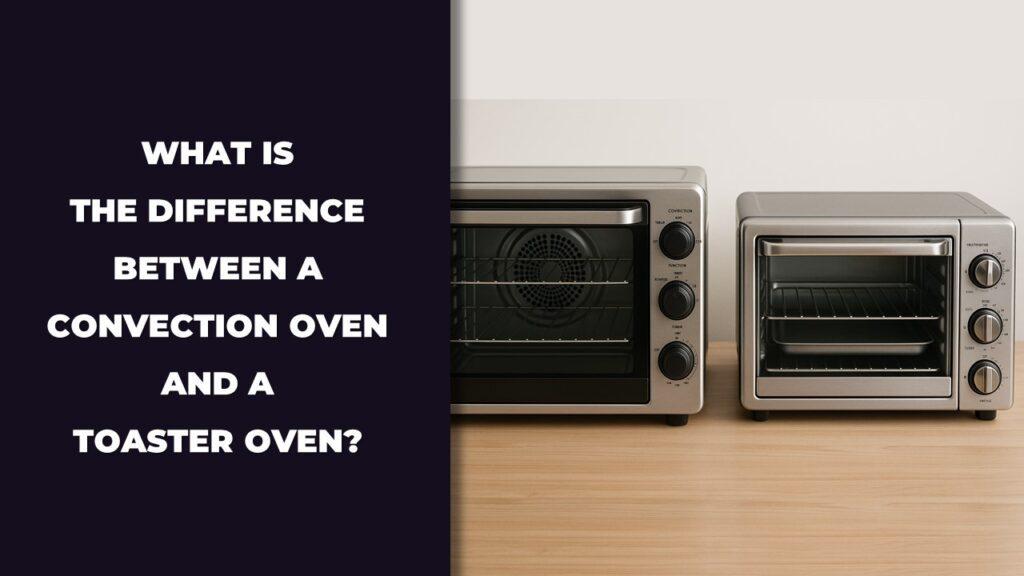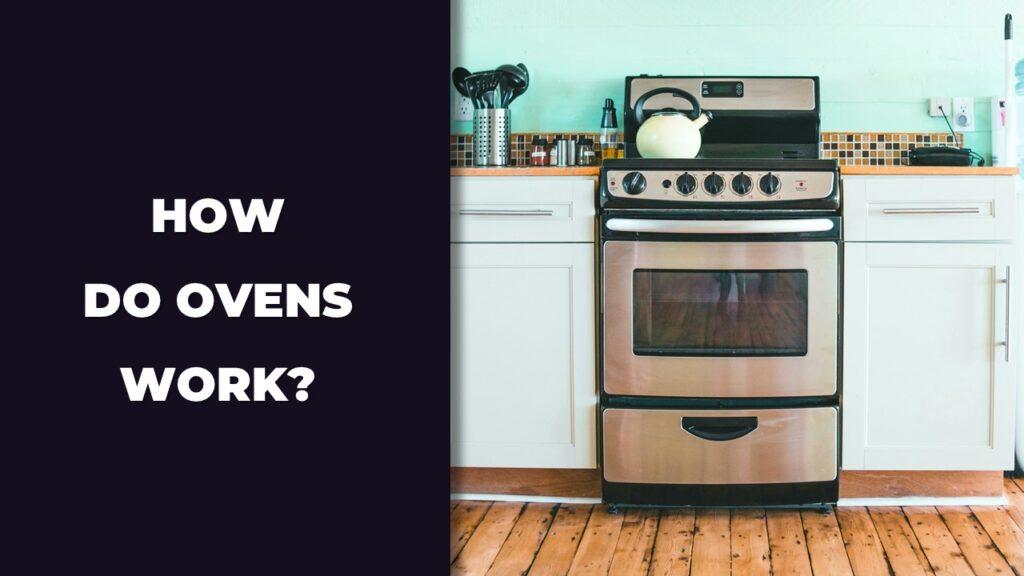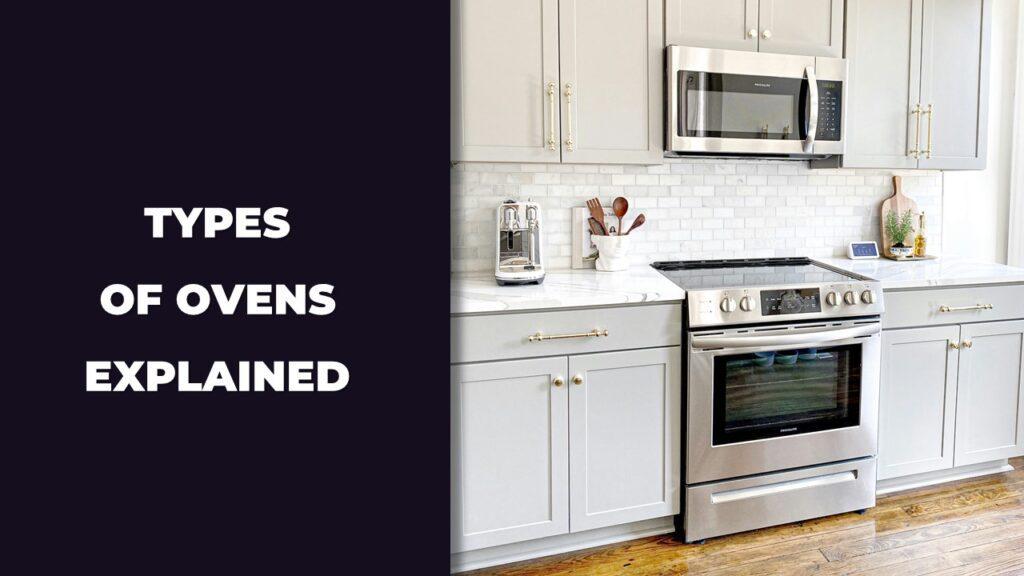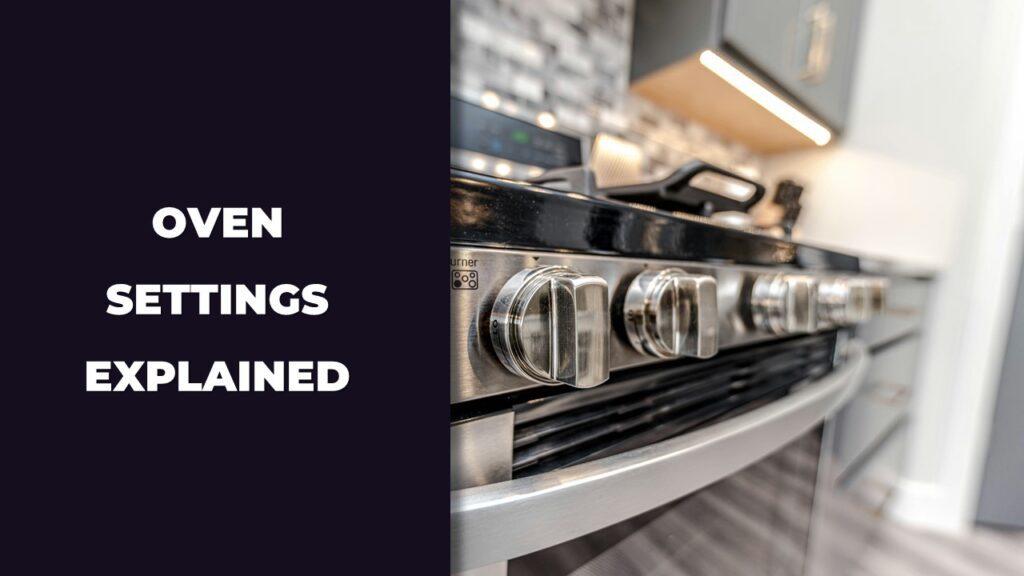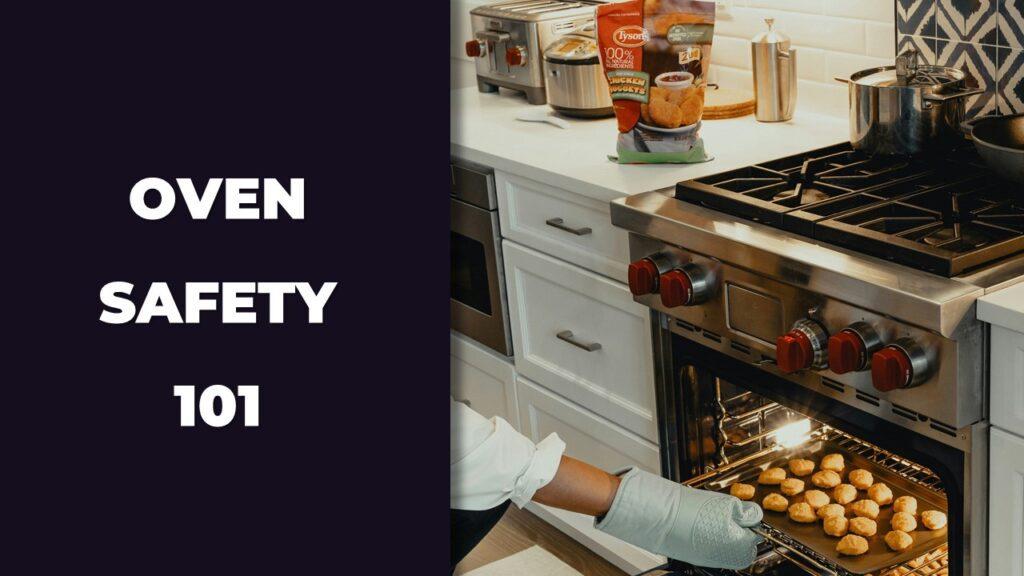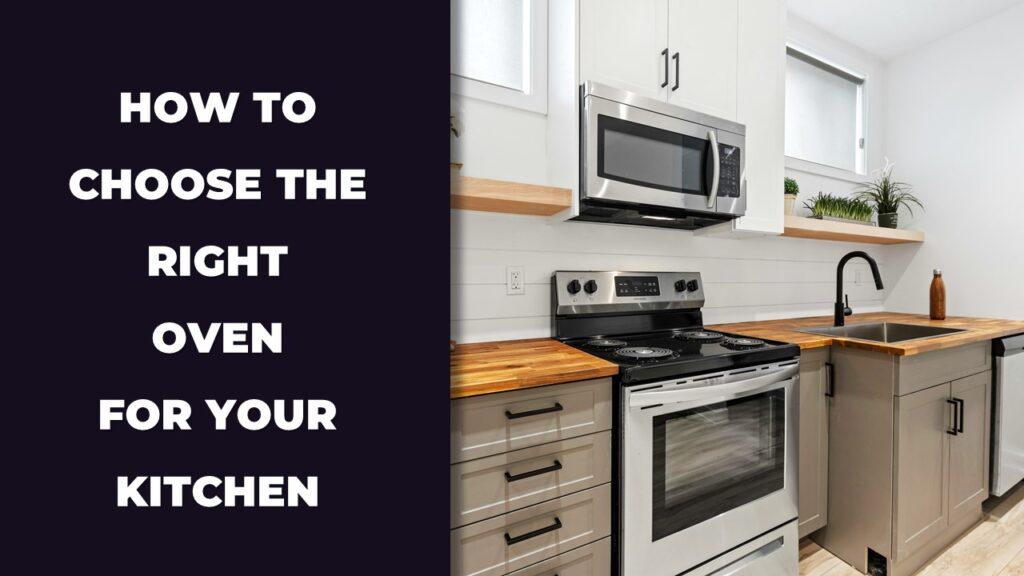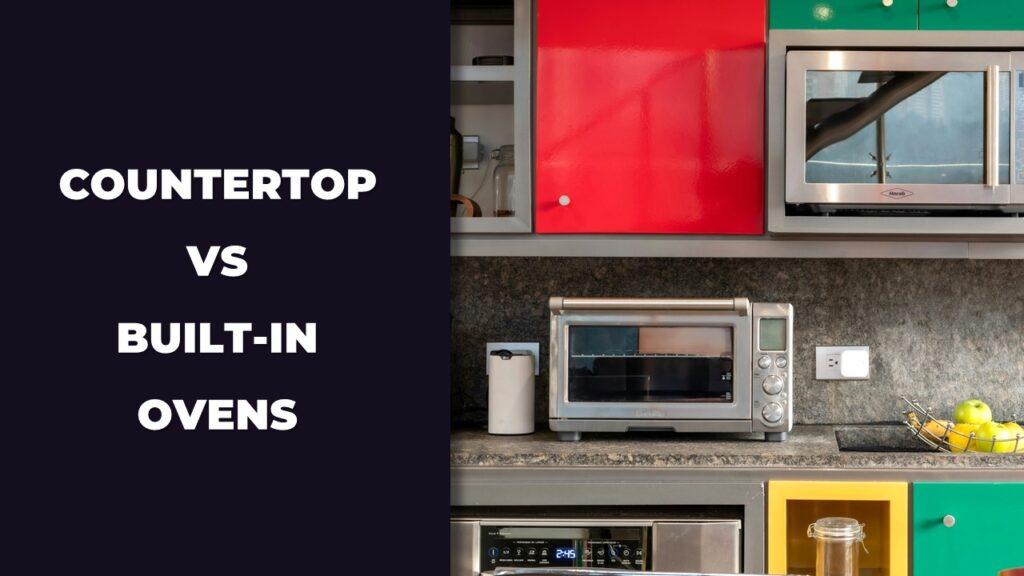
Countertop ovens are small, portable, and sit on your kitchen counter. They’re easy to move, cost less, and work well for quick or smaller meals. Built-in ovens are installed into your cabinets. They look sleek, hold more food, and are better for serious cooking, but they take up more space in your budget and require professional setup.
In this post, we’ll walk through the key differences between the two sizes, cost, cooking features, energy use, and more. You’ll learn which type of oven works better for different kitchen sizes, cooking habits, and lifestyles so you can make the right call without second-guessing.
What Is a Countertop Oven?
A countertop oven is a small, electric oven that sits right on your kitchen counter. It plugs into a wall socket and works like a regular oven, but in a more compact size. It’s ideal for quick meals, light baking, and smaller spaces like apartments or dorms.
Most countertop ovens come with multiple cooking modes like bake, broil, toast, and sometimes air fry or convection. They’re often used as a second oven in busy kitchens or as a main oven when space is limited. Because they preheat faster and use less energy, they’re a handy option for daily use.
You don’t need any installation, just plug it in, and you’re good to go. While it can’t cook a full holiday dinner, it can handle everything from pizza to cookies. Some models even come with timers, interior lights, and multiple racks, giving you solid control over your cooking without the bulk of a full-size unit.
What Is a Built-In Oven?
A built-in oven is a cooking appliance that’s installed directly into your kitchen cabinetry. It’s designed to stay in one spot and gives your kitchen a clean, seamless look. These ovens are often placed at eye level for easier access and a more ergonomic setup.
Built-in ovens come in single or double configurations and usually offer more interior space than countertop models. They’re great for baking multiple dishes at once or preparing large meals for families. Many include advanced features like convection baking, self-cleaning, and smart controls.
Because they’re built into your kitchen design, they require professional installation and cost more upfront. But they also add to the overall function and appearance of the kitchen. If you cook often and have the space, a built-in oven offers more flexibility and power than a plug-in model.
Countertop vs Built-In Ovens: Full Comparison
Countertop ovens are compact, affordable, and sit on your kitchen counter, while built-in ovens are installed into cabinetry, offering a sleek look and more cooking power. Countertop models are easier to set up and move, but built-ins handle larger meals and come with advanced features. The right one depends on your space, cooking habits, and budget.
Both ovens have their place, but they solve different problems. Here’s a closer look at how they compare in real-life kitchen use.
Comparison Table: Countertop vs Built-in Ovens
| Feature | Countertop Oven | Built-in Oven |
| Installation | Plug-and-play, no setup needed | Requires professional installation |
| Portability | Highly portable, easy to relocate | Fixed in place, not movable |
| Space Use | Uses countertop space | Built into cabinets, saves counter space |
| Cooking Capacity | Smaller, fits 9×13 pan (single-rack cooking) | Larger, multi-rack for big meals |
| Energy Efficiency | More efficient for small meals | Less efficient for small portions; better for big cooking |
| Preheat Time | Heats up quickly | Slower preheat time due to size |
| Features | Often includes air fry, toast, reheat, convection | Advanced baking, roasting, broiling, smart oven options |
| Aesthetics | Freestanding design; may not match kitchen decor | Seamless and modern built-in look |
| Maintenance | Easy to clean and repair | Can be harder and costlier to service |
| Cost | Affordable ($50–$300 average) | Higher initial cost ($600–$2,000+ plus install) |
| Best For | Renters, small kitchens, quick meals | Families, remodelers, avid cooks with long-term kitchens |
Size And Space Usage
Countertop ovens are smaller and sit directly on your counter. They’re great if you don’t have space for a full oven or you just need a quick-cooking solution. The downside is they take up valuable prep space.
Built-in ovens are placed into your cabinets, which helps free up counter space. They do require a dedicated spot in your kitchen layout, but once installed, they offer a cleaner, more organized setup.
Cooking Capacity And Performance
Countertop ovens usually fit one pan or dish at a time. They work well for single servings, small families, or second-oven needs. Some models can roast a whole chicken, but don’t expect to cook a full holiday meal in one.
Built-in ovens offer more room, multiple racks, and better heat control. You can cook several dishes at once without crowding the space. They also reach and hold high temperatures more reliably, which matters if you bake often or roast large portions.
Installation And Setup
Countertop ovens are simple—plug it in and use it. No drilling, no planning, and no contractors needed.
Built-in ovens, on the other hand, require proper cabinet space and electrical work. You’ll likely need professional installation, especially if you’re remodeling or adding one to an older kitchen.
Portability And Flexibility
Countertop ovens can go wherever you go. If you move often or live in a rental, this is a huge plus. You can even store them away when not in use.
Built-in ovens stay put. They’re part of the kitchen design and not made to be moved. This can be a drawback if you plan to relocate soon or need flexibility.
Energy Use And Preheat Time
Countertop ovens heat up faster because they’re smaller. That means less waiting and less electricity used for quick meals.
Built-in ovens use more energy and take longer to preheat. But for larger meals or long cooking times, they’re more efficient and consistent.
Maintenance And Repairs
Countertop ovens are easy to clean. Wipe down the interior, and you’re done. If something breaks, repairs are usually simple or you can just replace the unit.
Built-in ovens are harder to reach and more expensive to fix. You may need a technician for repairs, and cleaning around the oven can be tricky depending on how it’s installed.
Design And Kitchen Aesthetics
Countertop ovens are visible and don’t always match your kitchen design. Newer models come in sleek finishes, but they still sit out in the open.
Built-in ovens blend into your cabinets and give the kitchen a modern, clean look. They also free up visual space, which makes the kitchen feel less cluttered.
Price And Long-Term Investment
Countertop ovens usually cost less upfront—anywhere from $50 to $300 depending on features.
Built-in ovens range from $600 to $2,000 or more, plus the cost of installation. While they’re more expensive, they’re also more durable and can add value to your home.
Pros And Cons of Countertop vs Built-In Ovens Summary
Countertop ovens are great if you want something simple, portable, and affordable. They work well for smaller meals, reheating, or as a backup when your main oven is full. But they do have limits, especially when it comes to size and cooking power. Built-in ovens are made for heavier use. They offer more space, better features, and a cleaner kitchen design, but come with a higher price tag and longer setup.
Here’s a closer look at what you’re really getting with each.
Countertop Ovens Pros And Cons
If you want flexibility without making a big investment, a countertop oven checks a lot of boxes. It’s easy to use, easy to store, and doesn’t require remodeling your kitchen. Ideal for students, renters, or anyone cooking for one or two people.
Pros:
- Easy to set up and move
- Heats up quickly
- Saves energy for small meals
- Great for renters or secondary oven use
- Cheaper than built-in models
Cons:
- Takes up counter space
- Limited cooking space inside
- May not match kitchen decor
- Exterior can get hot during use
- Less powerful than full-size ovens
Built-In Ovens Pros And Cons
If you’re cooking for a family or hosting often, a built-in oven gives you the room and features to handle big meals. It also fits right into your kitchen layout and looks polished. Just keep in mind, it’s not something you can just plug in and use the same day.
Pros:
- More cooking space and power
- Seamless kitchen look
- Convenient height (no bending)
- Long-lasting build
- Better for multitasking meals
Cons:
- Costs more up front
- Needs professional installation
- Not portable
- Takes up cabinet space
- More expensive to repair
When To Choose A Countertop Oven
A countertop oven is the right choice if you want something compact, portable, and simple to use without spending a lot. It’s great for everyday cooking, especially when space or budget is tight.
If your cooking habits are light or your kitchen setup changes often, this type of oven can be a reliable, low-hassle solution.
Choose a countertop oven if:
- You live in a small apartment, dorm, or RV
- You only cook small meals or single servings
- You need a second oven for busy holidays or meal prep
- You’re renting and want something you can take with you
- You don’t want to deal with installation or remodeling
- You’re on a budget and just need basic oven functions
- You like energy savings and faster preheat times for quick meals
When To Choose A Built-In Oven
A built-in oven is a better pick if you cook often, need more space, or want a clean, permanent kitchen layout. It’s designed to be part of your kitchen setup and usually offers better performance and cooking features.
If you’re building or remodeling your kitchen, or you just want a long-lasting solution, a built-in model is worth the investment.
Choose a built-in oven if:
- You have a medium to large kitchen with available cabinet space
- You cook large meals regularly or bake multiple dishes at once
- You’re planning a kitchen upgrade or new home build
- You want a sleek, seamless kitchen look
- You prefer cooking at eye level, without bending
- You need more advanced features, like multiple racks or smart controls
- You’re not concerned about moving or relocating appliances often
Can A Countertop Oven Replace A Regular Oven?
Yes, a countertop oven can replace a regular oven for many people, especially if you mostly cook small portions or use basic cooking functions. While it can’t match the size and power of a full oven, it covers the basics surprisingly well.
For those who don’t cook large meals or who value convenience, a good countertop model can handle everyday tasks just fine.
It can replace a full oven if:
- You rarely cook for more than two people
- You don’t need to use multiple racks at once
- You mainly bake, toast, roast, or reheat
- You’re okay with cooking smaller batches in more rounds
- You want to save space, energy, and money
- You pair it with other appliances like an air fryer or microwave
- You need a backup for when your main oven is being repaired or cleaned
Conclusion
Choosing between a countertop oven vs built-in oven depends on your cooking needs, kitchen space, and how much flexibility you want. Countertop ovens are compact, budget-friendly, and perfect for small meals or tight spaces. They’re great for renters, college students, or as a handy second oven.
On the other hand, built-in ovens offer more power, larger cooking capacity, and a clean, modern look that blends into your kitchen. If you cook for a big family or host often, a built-in oven might suit your lifestyle better, even if it comes with a higher price and installation work.
Both oven types have their place in today’s kitchens. Some people even choose to have both for maximum convenience—using the countertop oven for quick tasks and the built-in for bigger cooking sessions. Think about your habits and kitchen layout before making the final call.
Frequently Asked Questions
Can I Bake Cakes And Roast Meats In A Countertop Oven?
Yes, most countertop ovens can bake cakes and roast meats, especially if they include convection or multiple rack settings. Just make sure your bakeware fits inside.
How Long Do Built-In Ovens Last?
Built-in ovens usually last 10 to 15 years with regular cleaning and proper use. Higher-end models with quality parts may last even longer.
Do Countertop Ovens Get Hot On The Outside?
Yes, the exterior of countertop ovens can get hot during use. It’s best to place them on a heat-safe surface with room for air to circulate.
Is It Worth Having Both Types In One Kitchen?
Absolutely. Many people use a built-in oven for big meals and a countertop oven for quick tasks or as a backup. This combo offers speed, energy savings, and convenience.
Are Built-In Ovens Hard To Repair Or Replace?
Yes, built-in ovens can be more challenging to repair or replace due to their installation. Repairs often require a technician, and replacements may need custom cabinet work.

At our core, we’re a group of passionate households and gardening tools and appliances users and enthusiasts. We dive deep into the world of tech, especially when it’s about your household or gardening electric items. We try to provide as much value to the readers with our information and how to blog articles as possible. For affiliate articles our honest and transparent reviews of essential tech products are rooted in real-world experience. We take great satisfaction in offering unbiased evaluations, ensuring that you can make informed decisions when investing in your desired techs.

